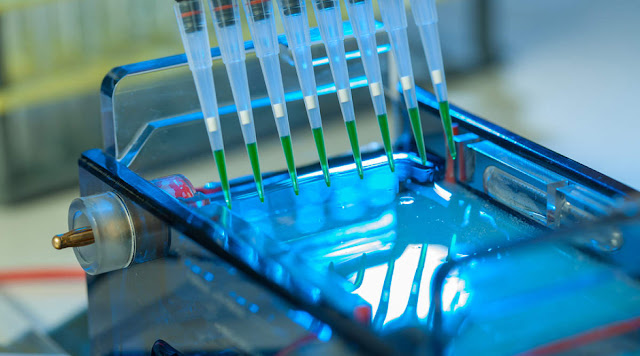Things to know about the Electrophoresis
 |
| Electrophoresis Market |
What is
Electrophoresis?
Electrophoresis is an electrokinetic method that uses an electrical charge field to separate charged particles in a fluid. It's most commonly employed in life sciences to separate protein molecules or DNA, and depending on the type and size of the molecules, it can be done in a variety of ways. Although the techniques vary in certain areas, they all require an electrical charge source, a support medium, and a buffer solution. In laboratories, electrophoresis is used to separate molecules depending on their size, density, and purity.
The global electrophoresis market is estimated to be valued at US$ 2,786.3 Mn in 2021 and is expected to exhibit a CAGR of 5.6 % over the forecast period (2021-2028).
How does it work?
An electric field is supplied to molecules, which results in
a force acting on them because they are electrically charged. The larger the
charge of the molecule, the greater the force produced by the electrical field,
and hence the further the molecule will move relative to its mass through the
support medium.
DNA and RNA analysis, as well as protein electrophoresis, a
medical method for analysing and separating molecules found in a fluid sample,
are examples of electrophoresis applications (most commonly blood and urine
samples).
Types of
Electrophoresis
For electrophoresis, many types of gels are commonly
employed as the support medium, which can be in slab or tube form depending on
which is more advantageous. Gel slabs are commonly used in laboratories because
they allow multiple samples to be processed at the same time. Tube gels, on the
other hand, provide superior resolution of the data and are frequently used for
protein electrophoresis.
For DNA electrophoresis, an agarose gel is typically used.
Although it has a wide pore structure that allows larger molecules to pass
freely, it is not appropriate for sequencing smaller molecules.
PAGE (polyacrylamide gel electrophoresis) offers a higher
resolution than agarose gel electrophoresis, making it better for quantitative
analysis. This allows researchers to figure out how proteins bind to DNA.
Through plasmid analysis, it can also be utilised to build a better
understanding of how bacteria become resistant to antibiotics.
Molecules are separated along an x-axis and a y-axis in 2D
electrophoresis, with one separating them by charge and the other by size.



Comments
Post a Comment